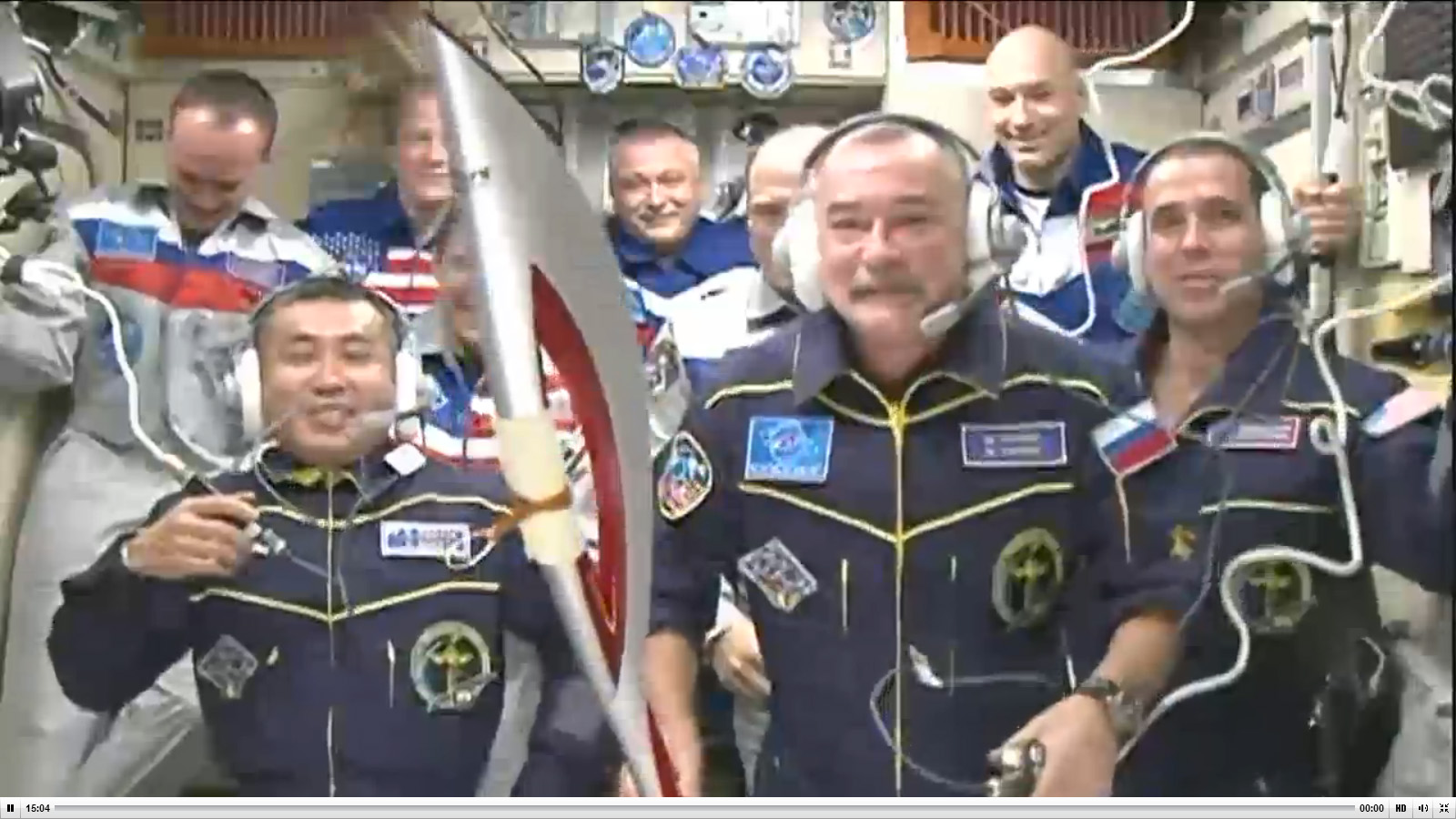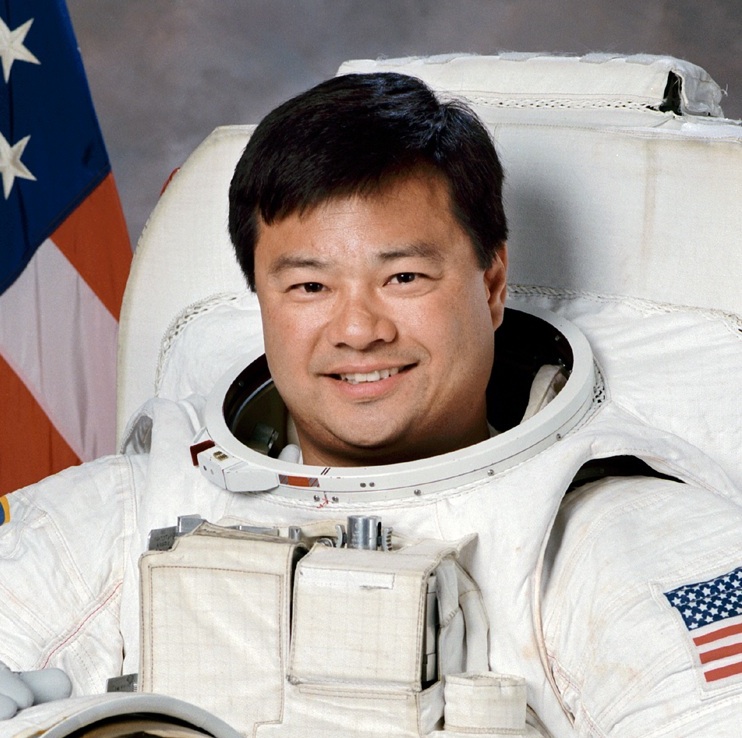
Sending Olympic Torch to Space, Russia Flaunts Inspiration Superiority (Op-Ed)

Leroy Chiao is a former NASA astronaut and commander of the International Space Station. During his 15-year flying career, he performed six spacewalks. Chiao is the special adviser for human spaceflight to the Space Foundation, and holds appointments at Baylor College of Medicine and Rice University. Chiao contributed this Op-Ed to SPACE.com's Expert Voices: Op-Ed and Insights.
Soyuz 11M roared into space just a few days ago, carrying the latest crew to the International Space Station. Normally, such an event doesn't rate mentions in the mainstream news media — but, this one got a few.
Why? The crew carried the Olympic torch with them, and the rocket was painted in a theme to commemorate the upcoming Sochi games. During the mission, two cosmonauts will take the torch out on a spacewalk, to further generate publicity for the games, and for human spaceflight.
The Russians have always been more advanced than we Americans in this area. They've had advertising placards in their mission control center — with many Western clients, by the way — and during space station Mir, they actually filmed a Pepsi commercial by having spacewalking cosmonauts inflate a large replica Pepsi can in space (the video turned out to be too grainy for use). In years past, Pizza Hut bought advertising space on the side of one of their rockets, as did a motion picture company (for an Arnold Schwarzenegger film). Isn't it interesting, that we are talking about American companies here, yet we Americans are not the ones soliciting the advertising? [See photos from the Olympic torch spacewalk]

Over the last month, the blockbuster films "Gravity " and "Ender's Game " have generated more popular interest in spaceflight than actual missions currently flying. There are many reasons for this, and Americans should not lament those reasons, but understand and embrace them, and create strategies to exploit them.
Strictly speaking, as part of the federal government, NASA is not allowed to advertise, but one wonders if the envelope could be stretched a bit. After all, the U.S. Military and the U.S. Postal Service are allowed to advertise. Surely, there would be some leeway and interpretation in the laws that could be tested?
But, NASA and entities that support space exploration could encourage commercial companies and others to advertise on space vehicles and missions. Could the up and coming commercial providers in the U.S. advertise on their rockets and spacecraft?
Get the Space.com Newsletter
Breaking space news, the latest updates on rocket launches, skywatching events and more!
It is time to really think about ways to leverage the public's interest in space pop-culture, into support for actual space exploration. Who's got some good ideas?
Chiao's most recent Op-Ed was "The AstroCritic: 'Ender's Game'." The views expressed are those of the author and do not necessarily reflect the views of the publisher. This article was originally published on SPACE.com.
Join our Space Forums to keep talking space on the latest missions, night sky and more! And if you have a news tip, correction or comment, let us know at: community@space.com.
Leroy Chiao is a former NASA astronaut and International Space Station (ISS) commander. Chiao holds appointments at Rice University and the Baylor College of Medicine. Chiao has worked extensively in both government and commercial space programs, and has held leadership positions in commercial ventures and NASA. Chiao is a fellow of the Explorers Club, and a member of the International Academy of Astronautics and the Committee of 100. Chiao also serves in various capacities to further space education. In his 15 years with NASA, Chiao logged more than 229 days in space, more than 36 hours spent in Extra-Vehicular Activity (spacewalks). From June to September 2009, he served as a member of the White House appointed Review of U.S. Human Spaceflight Plans Committee, and currently serves on the NASA Advisory Council. Chiao studied chemical engineering at the University of California, Berkeley, earning a Bachelor of Science degree in 1983. He continued his studies at the University of California at Santa Barbara, earning his Master of Science and Doctor of Philosophy degrees in 1985 and 1987. Prior to joining NASA in 1990, he worked as a research engineer at Hexcel Corp. and then at the U.S. Department of Energy's Lawrence Livermore National Lab. Dr. Chiao left NASA in December, 2005 following a 15-year career with the agency. Chiao studied chemical engineering at the University of California, Berkeley, earning a Bachelor of Science degree in 1983. He continued his studies at the University of California at Santa Barbara, earning his Master of Science and Doctor of Philosophy degrees in 1985 and 1987. Prior to joining NASA in 1990, he worked as a research engineer at Hexcel Corp. and then at the U.S. Department of Energy's Lawrence Livermore National Lab.










